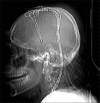Ablative neurosurgery and deep brain stimulation for obsessive-compulsive disorder
- PMID: 30745680
- PMCID: PMC6343416
- DOI: 10.4103/psychiatry.IndianJPsychiatry_523_18
Ablative neurosurgery and deep brain stimulation for obsessive-compulsive disorder
Abstract
Despite advancements in pharmacotherapeutic and behavioral interventions, a substantial proportion of patients with obsessive-compulsive disorder (OCD) continue to have disabling and treatment-refractory illness. Neurosurgical interventions, including ablative procedures and deep brain stimulation (DBS), have emerged as potential treatment options in this population. We review the recent literature on contemporary surgical options for OCD, focusing on clinical aspects such as patient selection, presurgical assessment, and safety and effectiveness of these procedures. Given the invasiveness and limited evidence, these procedures have been performed in carefully selected patients with severe, chronic, and treatment-refractory illness. Along with informed consent, an independent review by a multidisciplinary team is mandated in many centers. Both ablative procedures and DBS have been found to be helpful in around half the patients, with improvement observed months after the procedure. Various targets have been proposed for either procedure, based on the dominant corticostriatal model of OCD. There is no strong evidence to recommend one procedure over the other. Hence, the choice of procedure is often based on the factors such as affordability, expertise, and reversibility of adverse effects. Surgery is not recommended as a standalone treatment but should be provided as part of a comprehensive package including medications and psychotherapeutic interventions. Available evidence suggest that the benefits of the procedure outweigh the risks in a treatment-refractory population. Advances in neurosurgical techniques and increasing knowledge of neurobiology are likely to bring about further progress in the efficacy, safety, and acceptability of the procedures.
Keywords: Deep brain stimulation; neurosurgery; obsessive-compulsive disorder; psychosurgery; treatment resistance.
Conflict of interest statement
There are no conflicts of interest.
Figures
References
-
- Koran LM, Hanna GL, Hollander E, Nestadt G, Simpson HB American Psychiatric Association. Practice guideline for the treatment of patients with obsessive-compulsive disorder. Am J Psychiatry. 2007;164:5–3. - PubMed
-
- Leicester (UK): British Psychological Society; 2006. National Collaborating Centre for Mental Health (UK). Obsessive-Compulsive Disorder: Core Interventions in the Treatment of Obsessive-Compulsive Disorder and Body Dysmorphic Disorder, National Institute for Health and Clinical Excellence: Guidance. - PubMed
-
- Pallanti S, Hollander E, Bienstock C, Koran L, Leckman J, Marazziti D, et al. Treatment non-response in OCD: Methodological issues and operational definitions. Int J Neuropsychopharmacol. 2002;5:181–91. - PubMed
-
- Eddy KT, Dutra L, Bradley R, Westen D. A multidimensional meta-analysis of psychotherapy and pharmacotherapy for obsessive-compulsive disorder. Clin Psychol Rev. 2004;24:1011–30. - PubMed



